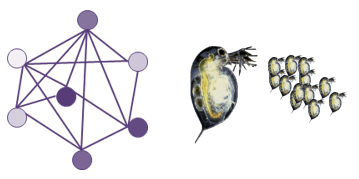Gene Coexpression Networks Drive and Predict Reproductive Effects in Daphnia in Response to Environmental Disturbances

Scientific abstract
Increasing effects of anthropogenic stressors and those of natural origin on aquatic ecosystems have intensified the need for predictive and functional models of their effects. Here, we use gene expression patterns in combination with weighted gene coexpression networks and generalized additive models to predict effects on reproduction in the aquatic microcrustacean Daphnia. We developed models to predict effects on reproduction upon exposure to different cyanobacteria, different insecticides and binary mixtures of cyanobacteria and insecticides. Models developed specifically for groups of stressors (e.g., either cyanobacteria or insecticides) performed better than general models developed on all data. Furthermore, models developed using in silico generated mixture gene expression profiles from single stressor data were able to better predict effects on reproduction compared to models derived from the mixture exposures themselves. Our results highlight the potential of gene expression data to quantify effects of complex exposures at higher level organismal effects without prior mechanistic knowledge or complex exposure data.
Full reference (link):
Asselman J, Pfrender ME, Lopez JA, Shaw JR, De Schamphelaere KAC. Gene Coexpression networks drive and predict reproductive effects in Daphnia in response to environmental disturbances. Environ Sci Technol, Article ASAP.

